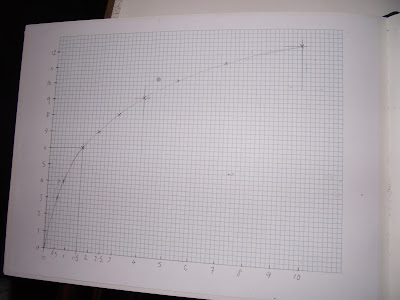So this was back in February, I had had a very productive week in ceramics and managed to churn out lots of test tiles for glazes and even more of my slip casts.
I then had lots of fired (yet still unglazed) pots out of my first mould. I decided (after a little chat with Claire) that I should clean off my shelf and have a little play with arranging them and taking some photos... the above is what I did. I think I really like this idea or repetition, creating something out of lots of the same part.
This is four of the interlocking piece idea. Again I like this idea of creating something, even a pattern from the use of repeated forms. I love the way the curves and cut off work when arranged like this, I also love the way the curved form works against the cut angular tops of the vessel forms.
So after all of this I had a play around with how I wanted to glaze these forms. I decided that I wanted this repetition idea to be central to how I wanted them glazed, and so I went with the idea of a gradient. To do this I decided to glaze each pot a slightly different shade of grey, going from white at one end to black at the other. This would accentuate the idea of repetition and let the viewer focus on the form of the object.
My next step was to do some glaze testing, I wanted a nice smooth gradient and so I tried two different white glazes, and added tiny amounts of black glaze stain into them. The top set was a barium matt glaze. I loved the matt quality of the tests, however I hated the fact that in very low quantities the black glaze stain reacted with something in the barium glaze to give a beige like colour and not a pale grey. So I then tried it with a shiny white glaze, which turned out amazingly.
I was adding 0.25g of black glaze stain for each test. From these I figured out that the colour difference was greater in the lower quantities than in the higher quantities. From this I realised that to get an even gradient I would need to draw up a graph to show the relation between how dark they were and how much glaze stain I had added.
...and from these I made up a big batch of glaze and glazed my pots (13 inners and 7 outers) in the gradient...
...and these are the finished articles...












beautiful vases!
ReplyDeleteI really like the form and the contrast between the thick and thin walled versions. The picture of them unglazed and stacked is so nice.